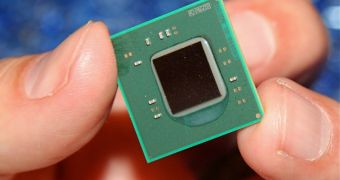Not long ago, Intel made the day of OEMs by finally releasing a series of Atom central processing units that had support for DDR3 memory. Up to that point, DDR2 was the fastest supported, which meant that there was, essentially, a performance limit that PC makers had no way of overcoming. The new chips removed this restriction, setting the stage for a range of devices that had a chance of persuading those that already owned netbooks to upgrade to a better one.
The so-called Canoe Lake platform did not deal exclusively with mobile processors, however. In fact, since the Atom line also included desktop processors, it was obvious that they would have to evolve into DDR3-supporting models eventually. This has finally occurred as the Atom D425 and D525 have finally started shipping, or at least that's what recent reports seem to imply.
The dual-core Intel Atom D425 and D525 are, more or less, almost identical to their predecessors, the D410 and D510. Their clock speeds are of 1.80GHz and their L2 cache memory is of 512GkB and 1MB, respectively.
Furthermore, the thermal design powers (TDPs) are of only 10W and 13W, respectively. As for the memory controller itself, it retains the previous generation's ability to handle DDR2-667 and 800MHz speeds, though DDR3 support is the true asset. Up to 4GB of DDR3 memory, clocked at 800MHz, can be paired with the new CPUs.
"Intel believes the strength of the Atom franchise can help consumers realize the true potential for a common experience to enable the compute continuum," said David (Dadi) Perlmutter, executive vice president and co-general manager, Intel Architecture Group, back when the chips were official unveiled.
The Intel Atom D425 and D525 are built using the 40nm manufacturing process technology and are bound to show up as part of new nettops soon.

 14 DAY TRIAL //
14 DAY TRIAL //